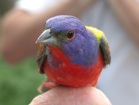Our approach
We use mathematical models and experiments in ascomycete yeasts to address various evolutionary questions. Currently our lab has several ongoing research questions.
Parameters of mutation
Ultimately, mutation is the source of all evolutionary change and so determining the rate of occurrence of all types of mutation (the mutation spectrum) is important for understanding evolution. We use ascomycete yeasts, primarily Saccharomyces cerevisiae, to investigate the spectrum of molecular mutation. In essence we seek to determine the rate at which different mutations arise. We do this primarily by accumulating mutations in the absence of selection (the “mutation accumulation” framework) and then characterizing the mutations that arise.
In addition to their molecular spectrum, we are interested in the fitness parameters associated with newly arising mutations. Our ultimate goal is to characterize the fitness effect distribution for mutations: i.e. how often mutations of a particular sign and magnitude of fitness effect arise. We also seek to elucidate pleiotropy (how one mutation affects multiple fitness components) and epistatis (how the fitness effect of a mutation is affected by other mutations) for newly arising mutations.
Sex chromosome evolution
By definition, sex chromosomes vary in copy number between males and females. This has several consequences that are important for the evolution of sex chromosomes compared to autosomes and to each other. Sex chromosomes are expected to differ from autosomes in recombination rates, in sex-specific inheritance (e.g. from fathers to daughters versus father to sons), in probabilities that adaptive mutations will enter a population, in genetic polymorphism, and in whether selfish elements will be observed. Our interests include determining substitution rates in sex chromosomes versus autosomes, predicting the long-term evolutionary dynamics of selfish sex chromosomes in populations, and identifying the manner in which dosage compensation is expected to evolve in young sex chromosomes.
Other projects
Fireflies (more information): In previous work, we have examined signal and receiver evolution in North American fireflies. In collaboration with Kathrin Stanger-Hall, we are clarifying the phylogenetic relationships, examining the molecular evolution of proteins involved in signal generation and reception, and investigating genome evolution. Kathrin's website is here.
Abstinence-only sex education (more information): In response to a serious lack of understanding of human reproductive biology in freshman biology majors, we investigated the efficacy of sex education in the U.S. Such programs can be evaluated based on two primary goals: reducing/preventing unwanted pregnancies and reducing the transmission of sexually transmitted diseases. Our goal with this work was to evaluate sex education programs in a manner that allows policy-makers to make informed funding decisions. We utilized publically available data to evaluate programs that range from comprehensive to those that only cover abstinence. We focused on teenage pregnancy, assuming the vast majority of such pregnancies are unplanned, as a measure of how well different sex education programs work.
Outreach (more information): Our lab has a strong commitment to outreach in local public schools. As part of this commitment, we have visited numerous local middle school classes so students can experience hands on interactions with reptiles and amphibians. Our goal has been to reinforce some of the lessons learned in their biology classes. In addition, we are currently developing lab exercises that utilize simulations to illustrate various principles for undergraduate evolution labs.

